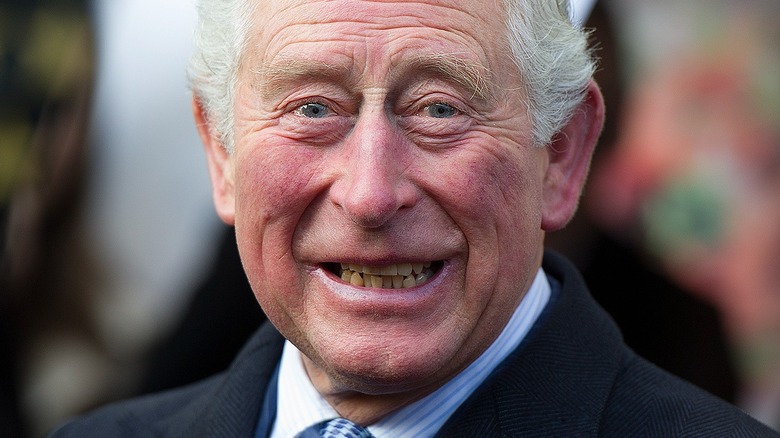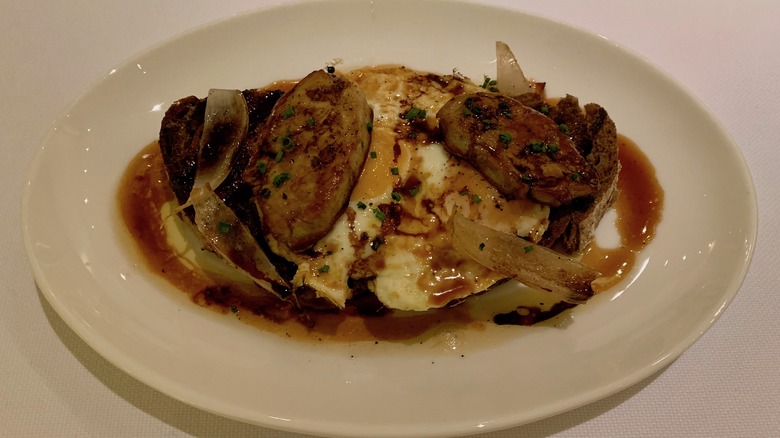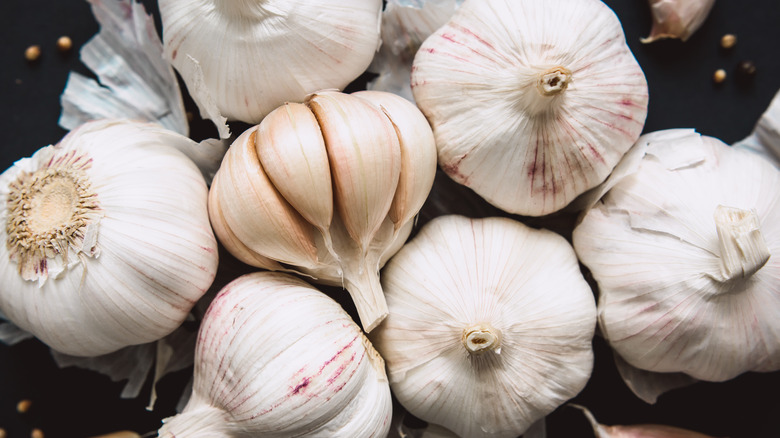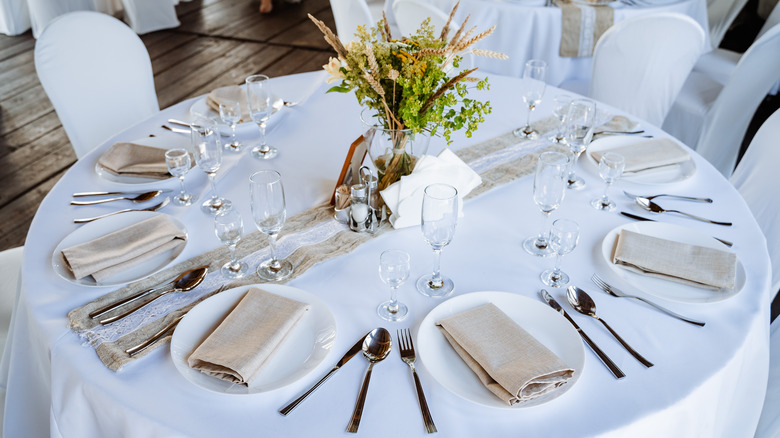The Luxurious Food King Charles Refuses To Eat
Even though royalty can eat practically anything they want, they aren't immune to being picky eaters. Take the late Queen Elizabeth II as an example. According to former royal chef Darren McGrady, she would typically eat grilled protein with vegetables for lunch and dinner, per British Heritage. Because she stuck to the same basic menu, McGrady says that the queen would request to see recipes when the kitchen served her something new, per YouTube.
After nearly 71 years serving Britain (and deciding the royal menu), Queen Elizabeth II died on September 8, leaving her son King Charles III as the new monarch, per Deadline. Following her death, the king released a statement addressing the nation, saying in part: "We mourn profoundly the passing of a cherished Sovereign and a much-loved Mother. I know her loss will be deeply felt throughout the country, the Realms and the Commonwealth, and by countless people around the world."
It's possible many things will change under the new leadership, but one that probably won't is the food item King Charles III has long prohibited.
The meal is said to be cruel to animals
Under King Charles III's reign, there is one dish you'll never see prepared in the royal kitchen. According to Daily Express, deputy master of the household at Clarence House, Andrew Farquharson, revealed that chefs could not purchase or serve foie gras. This refusal of the food began long before the new king's reign — it's been prohibited from the royal kitchen for the last 14 years.
Foie gras, which is considered a delicacy, is the enlarged liver of a duck or goose. Though King Charles III regards it as "disgusting," many others dislike it due to issues surrounding animal rights. To make the dish, you must force-feed the duck or goose through a feeding tube to enlarge its liver. Groups such as PETA have called for the banning of the dish altogether.
So, what's the king's go-to meal? As former Royal Chef Darren McGrady told the Daily Express, "He loves wild mushrooms and would take his chefs to Balmoral to show them where the best mushrooms are. We brought them back to Buckingham Palace, and they were the most amazing porcini mushrooms."
Other foods are also prohibited
Although King Charles III made the decision to ban foie gras, there are plenty of other foods that the royals are prohibited from eating. For instance, garlic is strictly prohibited in Buckingham Palace. When Queen Consort Camilla Parker Bowles appeared on "Masterchef Australia," she confirmed that "garlic is a no-no," per Delish. Judge Gary Mehigan then asked her if it's because the royals are constantly talking to other people, to which she replied, "Yes, exactly. So you always have to lay off the garlic."
Furthermore, the royal family is advised to stay away from some types of seafood. "When dining, the royal family has to be careful with shellfish due to shellfish poisoning, due to their work schedules," former royal butler and etiquette expert Grant Harrold said to Express. "Therefore, you will not normally find this on the royal menu." According to the Mayo Clinic, foods that fall into the shellfish category include shrimp, lobster, crab, oysters, squid, snails, and scallops.
Additionally, former Royal Chef Darren McGrady stated that the royal family tries to avoid starches, such as pasta, potatoes, and rice (per Bustle). However, on special occasions, the queen would sometimes allow a bit more. It's hard to yet say if any of these rules will change under the rule of King Charles III.
Etiquette is always important
The royals' menu isn't the only dining aspect that might differ from your household traditions. The royal family also holds proper etiquette at high importance. Before Queen Elizabeth II's death, it was vital that everyone remained standing until she took her seat (per Hello). Also, if the queen put down her utensils for any reason during the meal, those dining with her had to cease eating until she continued. According to etiquette expert William Hanson, this also means that guests were done when the queen was done. "When the queen's cutlery goes into the finished position, everyone else should follow suit — regardless of whether there is food left on their own plates," he said to Marie Claire.
To indicate that you're finished with your food, Hanson explained that you must position the silverware specifically on your plate. "If you imagine the plate as a clock face and the cutlery as the hands of the clock, when finished eating in Britain, the cutlery is positioned at 6:30 with the tines of the fork facing upwards," he said. Additionally, when you leave your seat, you should place your napkin neatly on the left side of your plate.
If it seems like a lot to remember, it is. So, if you ever manage to land an invite to a royal dinner, you'd better study fast.



